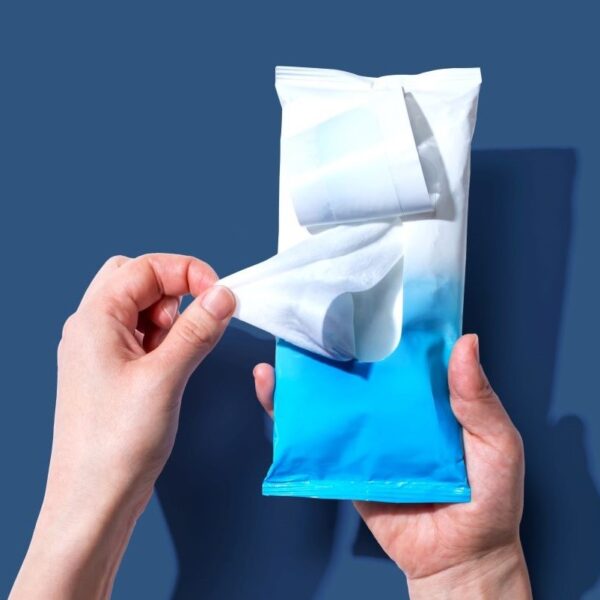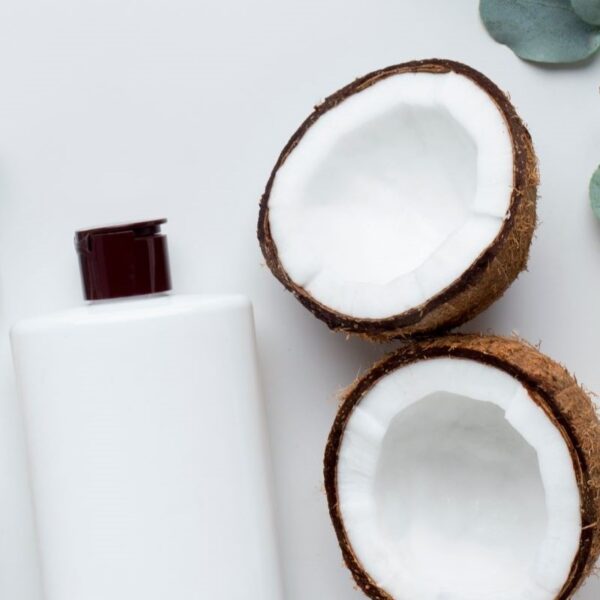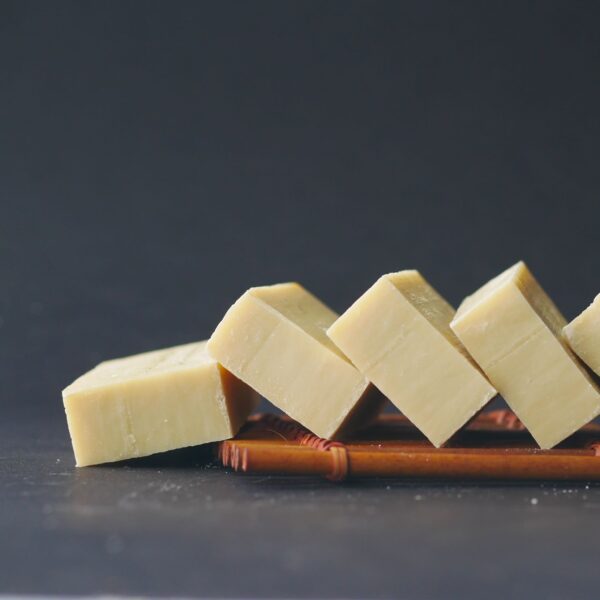Silica, also known as silicon dioxide, is a versatile natural mineral commonly found in sand and other rocks. It is used in many industries, from the production of computer chips to the production of glass. Still, a lesser-known use of this remarkable chemical is its role in the personal care industry.
In particular, Silica offers a range of skin and hair benefits. Its oil-absorbing, thickening, volumizing, and exfoliating properties make it an invaluable addition to many skincare, haircare, and cosmetics formulations.
What is Silica?
Silica, also known as Silicon dioxide, is a chemical compound composed of silicon and oxygen atoms. Its chemical formula is SiO2. Silica is a naturally occurring mineral found in various forms, including quartz, sand, and glass. It naturally occurs in both crystalline and amorphous forms.
Source: Chemsrc
How is Silica Produced?
Crystalline silica, a mineral that occurs naturally in rocks, sand, and clay, can be produced during digging earth, rock drilling, or tunneling. Certain materials and products may also contain silica in its natural form. The various forms of crystalline silica are: α-quartz, β-quartz, α-tridymite, β-tridymite, α-cristobalite, β-cristobalite, keatite, coesite, stishovite, and moganite [1].
Amorphous silica occurs naturally as flint, opal, or diatomaceous earth. Some deposits of diatomaceous earth contain considerable quantities of quartz [2].
The three main classes of amorphous silica are pyrogenic silica, precipitated silica, and silica gel. It can be produced synthetically by precipitation or pyrogenic (thermal) process.
Silica in Personal Care
In personal care products, silica is commonly used for multiple functions.
| Function | Details |
| Thickening agent | Silica can help to thicken the consistency of lotions, creams, and other skincare products. It helps to improve the texture and spreadability of the product, making it easier to apply to the skin. |
| Abrasive agent | Silica is often used in exfoliating products such as scrubs and cleansers to help remove dead skin cells and impurities from the skin’s surface. Its fine particles provide gentle exfoliation without irritating. |
| Anti-caking agent | Silica is commonly used in powdered cosmetics such as foundation, blush, and eyeshadow to prevent clumping and ensure a smooth application. |
| Absorbent | Silica has excellent oil-absorbing properties, making it ideal for oily or combination skin products. It helps to control excess oil and shine on the skin. |
| Mattifying agent | Silica is a mattifying agent for the skin and multiple color cosmetics products. |
| Volumizing | Silica is used to add volume and texture to the hair. It can help to create lift and body, making the hair appear fuller and more voluminous. |
Applications in Personal Care
| Type | Examples |
| Hair Care | Shampoo, Conditioner, Hair styling products |
| Skincare | Facial cleansers, Exfoliating scrubs, Moisturizers |
| Dental care | Toothpaste |
| Body care | Body washes, Scrubs, Deodorants |
| Makeup | Foundations, Powders, Primers |
| Nail care | Nail polishes |
| Sun care | Sunscreen |
Properties of Silica
| Physical Form | Powder, Crystals |
| Color | Transparent to Grey |
| Odor | Odorless |
| Molecular Weight | 60.08 g/mol |
| Density | 2.648 (α-quartz), 2.196 (amorphous) g/cc |
| Melting Point | 1713 °C |
| Refractive Index | 1.544 |
| Solubility | Insoluble in water |
Recommended Storage and Handling
Silica should be kept dry and stored in closed containers to avoid moisture. Silica with reactive hygroscopic functional groups should be stored under an inert atmosphere and kept cool (≤ 8°C).
Typical Formulations Using Silica
Matte Lipstick
| Component | % Composition |
| C8-C10 Fatty alcohol esters | 21.0 – 30.02 |
| Fatty acid C-10 | 5.0-7.0 |
| Starch aluminum octyl succinate | 7.0-10.0 |
| Ozokerite | 7.5-10.0 |
| Carnauba wax | 3.0-4.0 |
| Beeswax | 1.0-3.0 |
| Colloidal silica | 0.2-0.7 |
| Silica spheres containing hyaluronate sodium | 0.3-1.0 |
| Polyvinylidene polymer | 0.1-0.4 |
| Pigment | 6.0-9.0 |
| Perfume | 0.1-0.5 |
| Castor oil | qs 100 % |
Source: Google Patents
Toothpaste
| Component | % Composition |
| Sorbitol (70 wt% aquoeus solution) | 21 |
| Guar gum | 0.1 |
| Sodium saccharin | 0.27 |
| Sodium monofluorophosphate | 1.1 |
| CMC | 1 |
| Sodium bicarbonate | 0.1 |
| Sodium carbonate | 0.4 |
| Silica | 2 |
| Calcium carbonate | 42 |
| Titanium dioxide | 0.1 |
| Sodium lauryl sulphate | 2 |
| Methyl paraben | 0.1 |
| Propyl paraben | 0.02 |
| Deionized water | 28.8033 |
| Flavor | 1 |
| Cl Pigment Green 7 | 0.0067 |
Source: Google Patents
Silica Formulation Considerations
| Physical Forms | Powder, Crystal |
| Stability | Stable under atmospheric pressure at temperatures between 0 and 2000 K |
| Dosage | 0.05 to 1% |
| Effects on Properties | When added to personal care products, silica can affect their properties in the following ways: Improve Texture and Consistency: Silica can improve the texture and feel of personal care products by providing a smooth and silky finish. It can help to create a lightweight and non-greasy feel in products such as lotions, creams, and foundations. Visual Effect: Silica has light-diffusing properties that can help to blur imperfections and create a soft-focus effect. Thickening: Silica improves the consistency and stability of personal care products. It can also help to prevent products from separating or settling over time. Stability: Silica improves the stability of liquid products by preventing coalescence, It improves the stability of powder products by preventing clumping and caking. |
| Interaction with Other Components | Silica is generally considered chemically inert and stable, meaning it does not react with most other compounds. |
Types of Amorphous Silica
Pyrogenic/ Fumed Silica
Pyrogenic or fumed silica is amorphous silica produced through flame hydrolysis. This process involves burning silicon tetrachloride in a hydrogen-oxygen flame to produce fine silica particles [3]. Pyrogenic silica has a high surface area and unique properties, making it a versatile ingredient in various industries. Pyrogenic silica is commonly used in various applications as a thickening agent, rheology modifier, and anticaking agent. Pyrogenic silica is often used in personal care products such as creams, lotions, and gels to provide texture, stability, and a silky feel.
Precipitated Silica
Precipitated silica is another type of amorphous silica that is produced through a chemical precipitation process. This process involves reacting sodium silicate with a mineral acid to form a gel, which is then washed and dried to produce precipitated silica. Precipitated silica has a porous structure and high surface area, making it useful in various applications. Precipitated silica is commonly used as a filler, thickening, and anti-caking agent. Precipitated silica is used as an abrasive or exfoliating agent in personal care products.
Silica Gel
Silica gel is a porous form of silica that is synthetically produced through a sol-gel process. This process involves the hydrolysis and condensation of silicon alkoxides to form a gel, which is then dried to produce silica gel [4]. Silica gel has a high surface area and a network of interconnected pores, giving it excellent adsorption properties. Silica gel is commonly used as a desiccant to absorb moisture and humidity in various applications. It is used in packaging widely. Silica gel is often used in deodorants, antiperspirants, and powders to help control humidity and improve product stability.
Safety and Regulatory Considerations
| FDA Information | In the United States, the Food and Drug Administration (FDA) allows the direct addition of Silica to food as an anticaking agent and an indirect food additive in packaging materials. |
| EU Information | In the European Union (EU), as per Regulation (EC) No 1223/2009, some silica-based ingredients, such as hydrated silica and alumina magnesium metasilicate, are allowed in cosmetic products without restrictions [5]. |
| Cosmetic Ingredient Review (CIR) Information | The Cosmetic Ingredient Review (CIR) Expert Panel has assessed the safety of certain silica-based ingredients, finding them safe when used in cosmetics and personal care products according to their practices of use and concentration [6]. |
Safety & Toxicity of Silica
Silica, specifically amorphous silica used in cosmetics, poses minimal risks when applied topically. However, inhalation of fine silica particles, such as those found in certain cosmetic products like facial powders, can lead to respiratory issues. Crystalline silica, not typically used in cosmetics, is associated with severe conditions like silicosis when inhaled in high quantities [7].
Identification Numbers
| IUPAC Name | dioxosilane |
| CAS Number | 7631-86-9 |
| EC Number | 231-545-4 |
Fun Facts About Silica
- Silica makes up about 26% of the mass of the earth’s crust. It can be found in numerous minerals, including quartz, sand, and flint, among many others.
- Silica plays a fundamental role in the production of glass. Silica’s rapid heating and cooling has been used to create glass for thousands of years.
- The chips in our computers rely heavily on silica. Semiconductors, smartphones, laptops, and more include high-quality silicon chips.
- The inhalation of Silica dust is dangerous and can lead to lung disease. The construction industry utilizes high-end ventilation masks to filter out these particles.
- Silica is a primary ingredient in solar panels, making it an essential chemical for renewable energy efforts.
Additional Resources
Bibliography
- CDC – NIOSH Document on Safety
- Wiley Online Library – Article on Material Science
- Wiley Online Library – Research Article on Polymer Science
- Brinker Lab – Hydrolysis Publication 1988
- EUR-Lex – Regulation (EC) No 1223/2009 on Cosmetic Products
- Cosmetics Info – Ingredient Information on Silica
- PubMed – Book Section on Health & Safety







